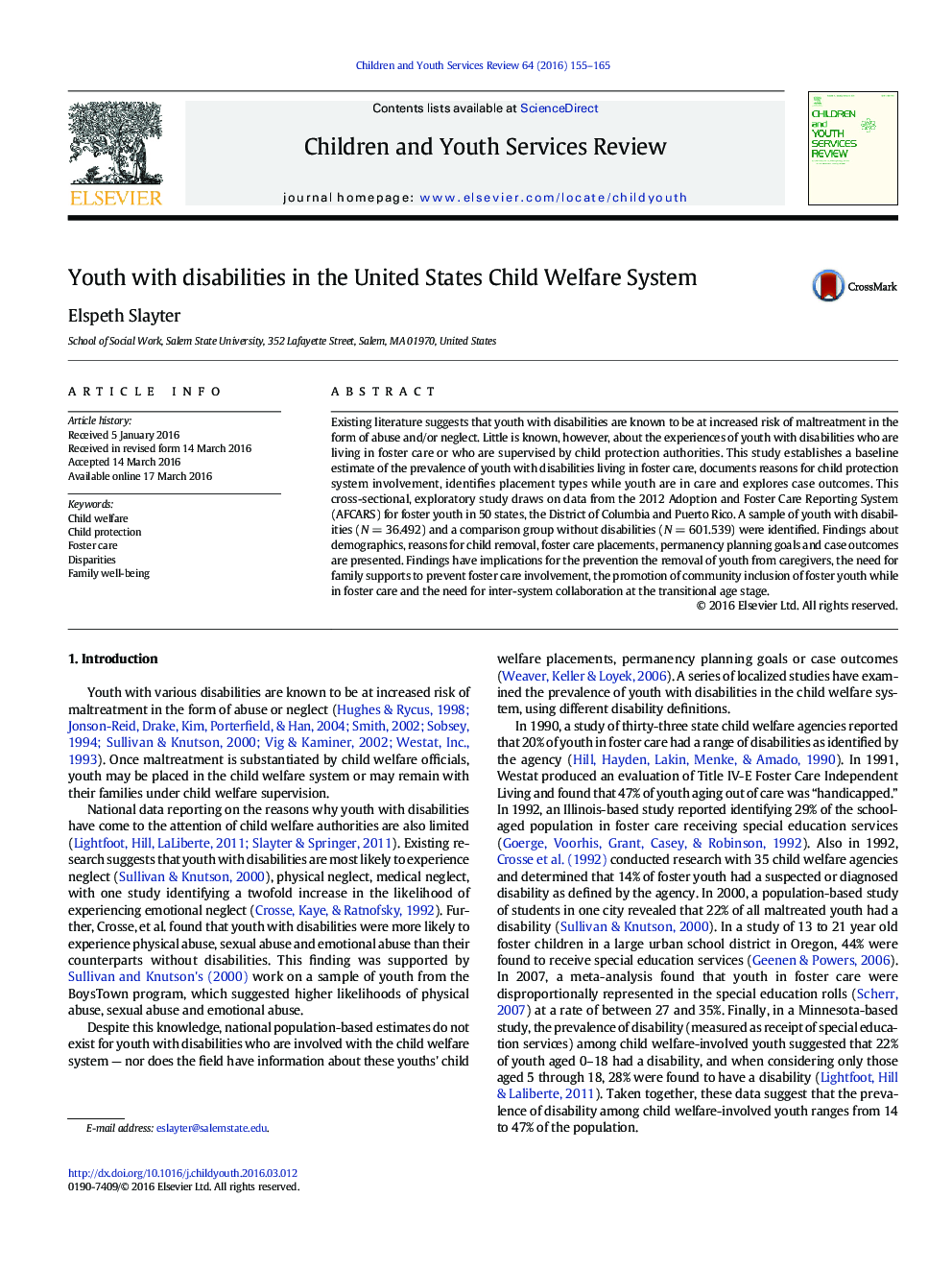| کد مقاله | کد نشریه | سال انتشار | مقاله انگلیسی | نسخه تمام متن |
|---|---|---|---|---|
| 345846 | 617769 | 2016 | 11 صفحه PDF | دانلود رایگان |
• Youth with disabilities were 31.8% of the foster care population
• Foster youth with disabilities were more likely to have been adopted previously
• Removal reasons that are more likely for youth with disabilities were child’'s alcohol or drug abuse, and parental inability to cope
• Youth with disabilities were 37% less likely to be placed with family in a trial home visit
• Youth with disabilities were 40% less likely to live in kinship foster care
Existing literature suggests that youth with disabilities are known to be at increased risk of maltreatment in the form of abuse and/or neglect. Little is known, however, about the experiences of youth with disabilities who are living in foster care or who are supervised by child protection authorities. This study establishes a baseline estimate of the prevalence of youth with disabilities living in foster care, documents reasons for child protection system involvement, identifies placement types while youth are in care and explores case outcomes. This cross-sectional, exploratory study draws on data from the 2012 Adoption and Foster Care Reporting System (AFCARS) for foster youth in 50 states, the District of Columbia and Puerto Rico. A sample of youth with disabilities (N = 36.492) and a comparison group without disabilities (N = 601.539) were identified. Findings about demographics, reasons for child removal, foster care placements, permanency planning goals and case outcomes are presented. Findings have implications for the prevention the removal of youth from caregivers, the need for family supports to prevent foster care involvement, the promotion of community inclusion of foster youth while in foster care and the need for inter-system collaboration at the transitional age stage.
Journal: Children and Youth Services Review - Volume 64, May 2016, Pages 155–165
